For a brief moment, it felt like time had stopped in the summer of 1999.
On a sweltering Californian day, a stadium of over 90,000 fans stood silent and still, rooted by anxiety, as Brandi Chastain prepared to take a penalty kick that could secure the Women’s World Cup for her country.
The right-footer had been instructed by her coach to strike with her left, even though she had never attempted a penalty kick with her weaker foot. Spectators gasped in unison before breaking into a roar.
Chastain scores. The U.S. players stampede towards their goalscoring hero who is embarking on what would become one of the most iconic celebrations in sports history.
She rips off her shirt, whips it around and over her head before falling to her knees. It is a fitting conclusion to the final Women’s World Cup of the 20th century and, in that moment, the United States Women’s National Team (USWNT) realign the stars for women’s soccer.
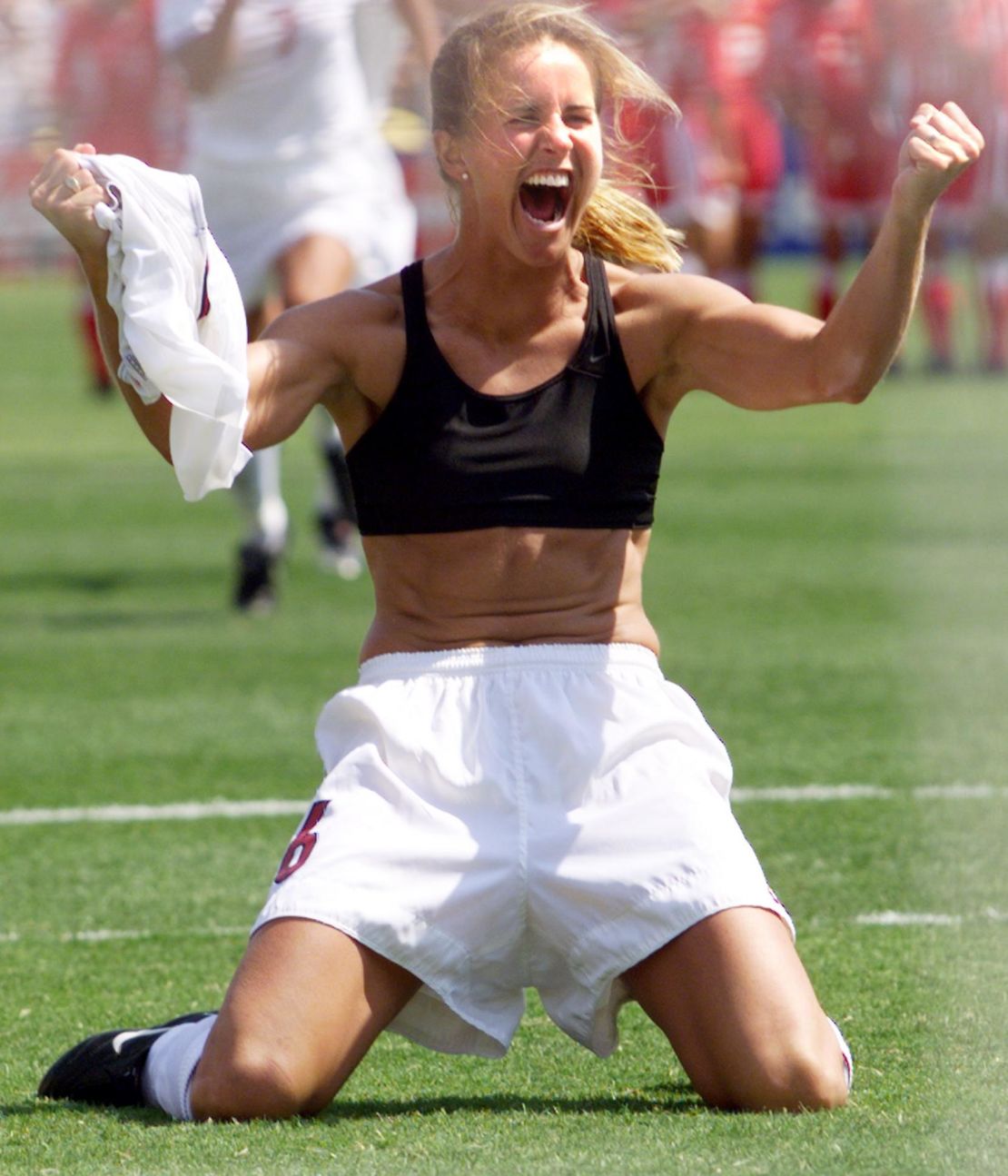
Never before had a crowd of such size gathered for a women’s sporting event and a better ending could not have been scripted, nor a better cast of pioneers selected, to win the hearts and minds of the estimated 40 million people watching in the US alone.
New heights were reached, records broken, and a legacy created.
Twenty years on and the impact of the squad fondly referred to as the “99ers” can still be felt. Their legacy lives on in the current generation of females playing at all levels around the world.
The “99ers” made great advances for female athletes around the world and are remembered as one of the best sports teams in history. This is their story.
READ: How Bob Marley’s daughter saved Jamaican women’s soccer
READ: The female footballers fighting for change in South America
Great athletes but not good soccer players
In the late 1990s, women’s soccer was in its formative years, evident through lack of resources and media coverage. Formed in 1985, the national team participated in its first tournament in Italy – against the host country, England and Denmark – but the concept of national pride didn’t immediately resonate with the players.
Michelle Akers, the force in the “99ers” midfield, recalls the-then coach yelling at the team, saying: “You guys don’t get it! This is your national team.”
“I didn’t really get it until we got our asses kicked by the other countries … They’d grown up with the game, obviously it’s embedded in their culture,” Akers, who struggled with Chronic Fatigue Syndrome during the final 10 years of her career, tells CNN Sport. “We were great athletes, but not necessarily good soccer players.”
In 1986 Anson Dorrance, the head coach of the University of North Carolina, took over as national team coach and instilled a philosophy that the USWNT abides by to this day.
“Anson Dorrance had a dream and a vision that the US could be the best in the world,” Akers explains. “He shared that with us and planted that seed in our dreams and vision of what we were trying to achieve and who we could be as a team and as players.”
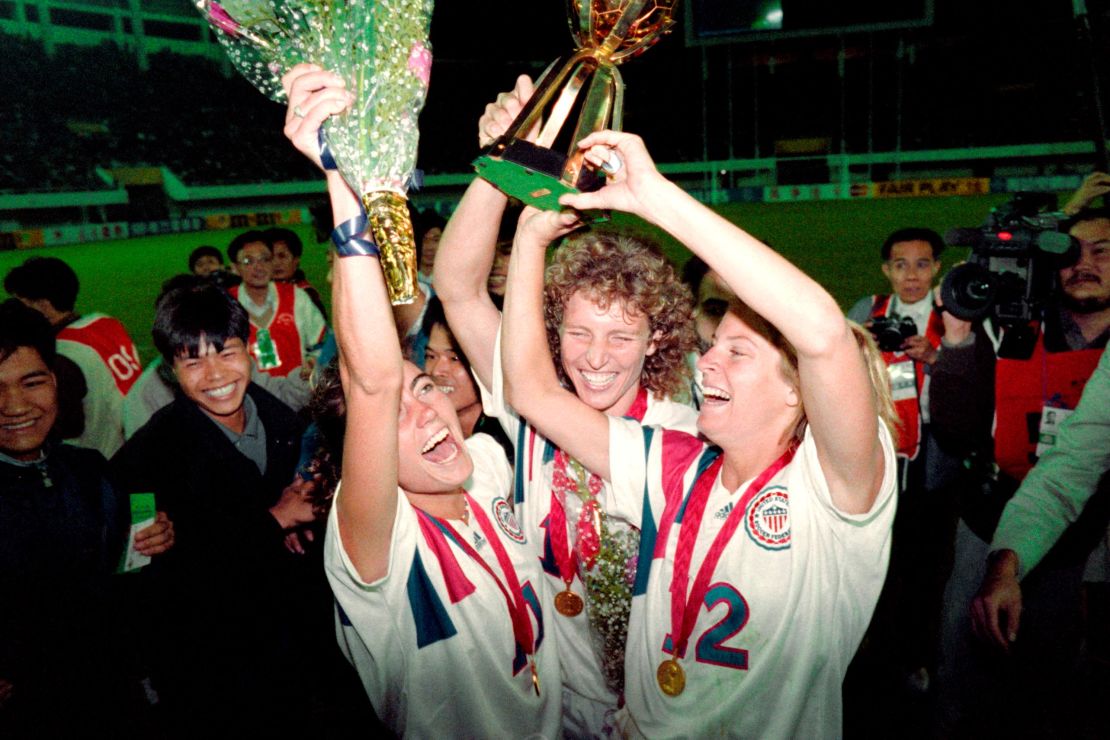
The next generation needed to be given its chance to develop and blossom together. That’s when teenagers Mia Hamm, Kristine Lilly, and Julie Foudy were invited to a training camp and selected ahead of more experienced players.
“I was with some of the original players, they were really good players, and when they weren’t on this next team they were pissed,” Akers, a two-time World Cup champion and winner of the Golden Boot in 1991, admits.
“It was upsetting … because they were better than the younger players on that day. But in two years they would be done, and these youngsters would be dominating.
“I was just focusing on us and what we had to do. I always looked at it as if we weren’t already the best – we were going to be the best.”
Visit CNN Sport for more news and videos
A team like no other
Over the next 10 years the team became a world force, winning the inaugural 1991 Women’s World Cup in China and Olympic gold five years later on home soil.
A crowd of 76,481 supporters had gathered in Athens, Georgia, for the first women’s football gold-medal match in Olympic history – setting the team’s first worldwide attendance record for most spectators to watch a female sporting event. With success came recognition. Eventually.
Despite the turnout, none of the team’s Olympic matches had been broadcast live on national television. FIFA, the sport’s governing body, took note and decided to harness spectator momentum by marketing the team in a way that attracted sponsors and pushed ticket sales for the 1999 World Cup.
In Mia Hamm, the world’s leading scorer, the team had a “reluctant superstar.”
Emphasizing the squad’s new-found place in popular culture, the striker was the inspiration behind the ‘Soccer Teresa’ doll, launched by Mattel for that home World Cup.
“I remember Anson Dorrance always saying every time we stepped on the field we were selling our game. We wanted to win and we wanted to win attractively,” Hamm says.
Her intensity on the field was matched only by her humility off it, she explains, “Everything I did was to make us better and to make our sport better.
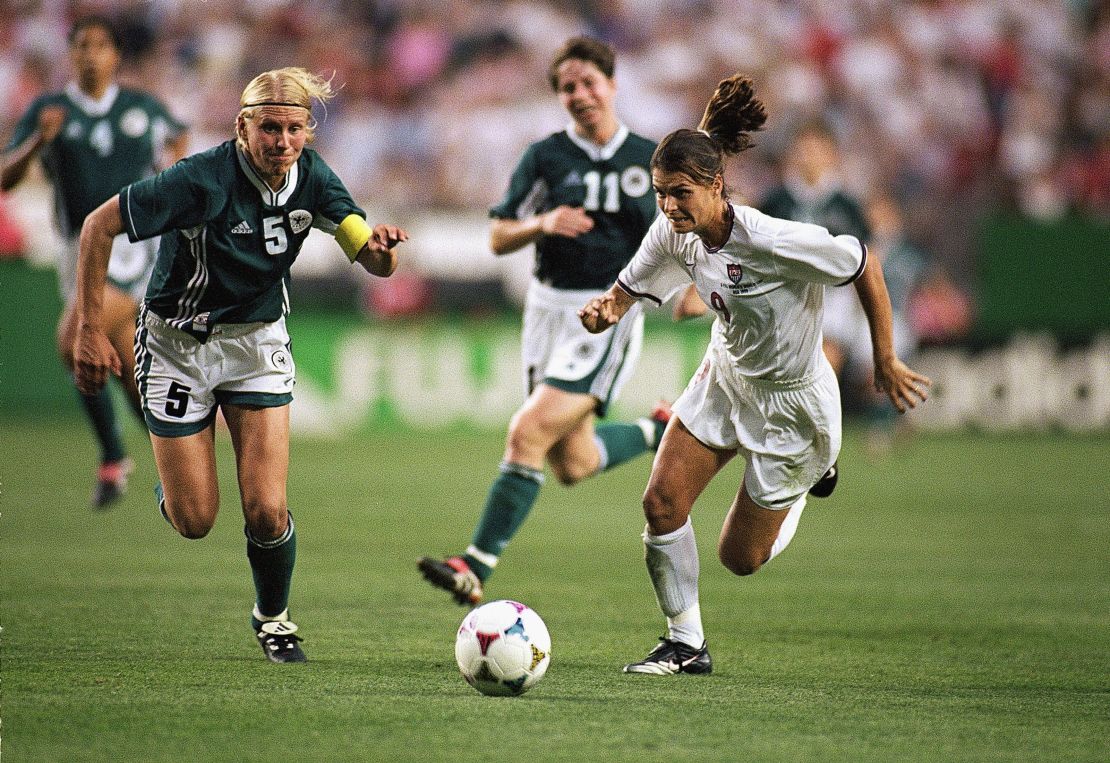
“But we also wanted to get into a street fight and stand toe-to-toe with the toughest to put the ball in the back of the net. All the things we really felt represent the American spirit, we wanted our team to represent.”
By the start of the 1999 Women’s World Cup, strong bonds had been formed. Not only were the “99ers” a talented team but a close one, too, and the team’s spirit resonated with the country’s large female fanbase.
“We had this sense of empowerment and purpose that enabled us to go out there and play freely,” says Hamm. “We talked about enjoying not only where we were but the journey to get there.”
Kristine Lilly, the quiet left-footed leader of the pack, regards 1999 as an amazing year “not just because we won,” she says, but because of who her teammates were. “That team was so special because we all knew our role,” says Lilly.
Julie Foudy, the team’s energetic co-captain and self-designated videographer, was the embodiment of a selfless leader and echoes Lilly’s sentiments.
“We were so lucky with our group,” Foudy, now an analyst and reporter for ESPN and author of “Choose to Matter: Being Courageously and Fabulously You,” states.
“When Mia Hamm is your superstar and she is the most selfless, humble and grounded person that never wants to take credit for anything, it’s easy to have an awesome group of women come together.”
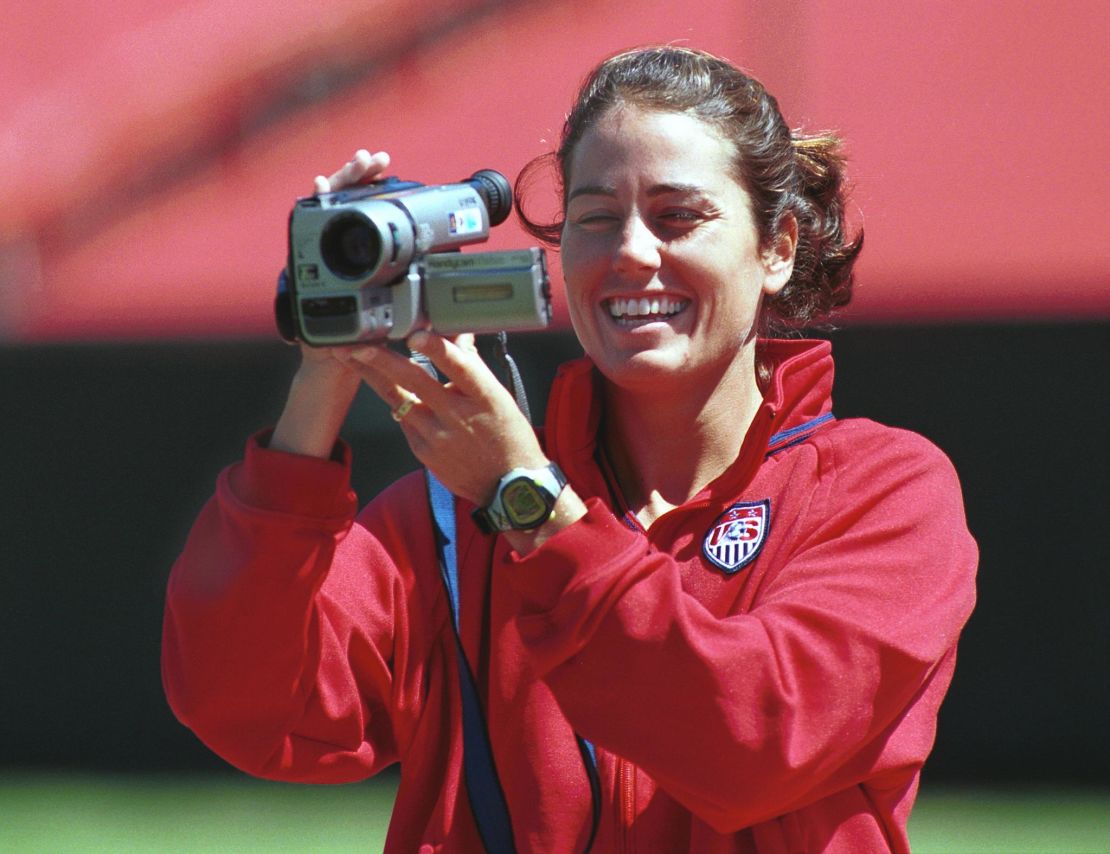
Tisha Venturini, the soul of the sidelines, says her role as substitute was difficult to adapt to but knew that supporting her teammates from the dugout was crucial to the well-being of the team. Deeming herself the “leader of the bench,” she kept the reserves positive and motivated.
“It wasn’t easy when you don’t get to be out there playing the whole time,” Venturini says. “But you’re still an important piece to the puzzle and you’re still a part of the team.
“A lot of times the scorer would run straight over to the bench, which says a lot when Mia scores her first goal and sprints to the sidelines to be with everybody else.”
Pioneers of the game
Both on and off the pitch, the “99ers” showed the world what female athletes were capable of and, by default, what women were capable of. They were selfless, authentic and determined to make a difference.
Beating China in the final – a team which the US had overcome to win gold at the 1996 Olympics – was about more than winning.
With the match scoreless after extra-time, both teams had to endure a nervy penalty shootout before 90,185 fans packed into the Rose Bowl stadium, which remains a record attendance for a women’s sporting event.
Briana Scurry saved the third penalty kick to give the US the lead. What started as an unwavering desire to win and regain a title the U.S. had last won in 1991, says the goalkeeper, snowballed into something more meaningful, more far-reaching.
“We figured that through the game of soccer and through a victory we could really bring the sport to a whole new level,” the double Olympic gold medalist says.
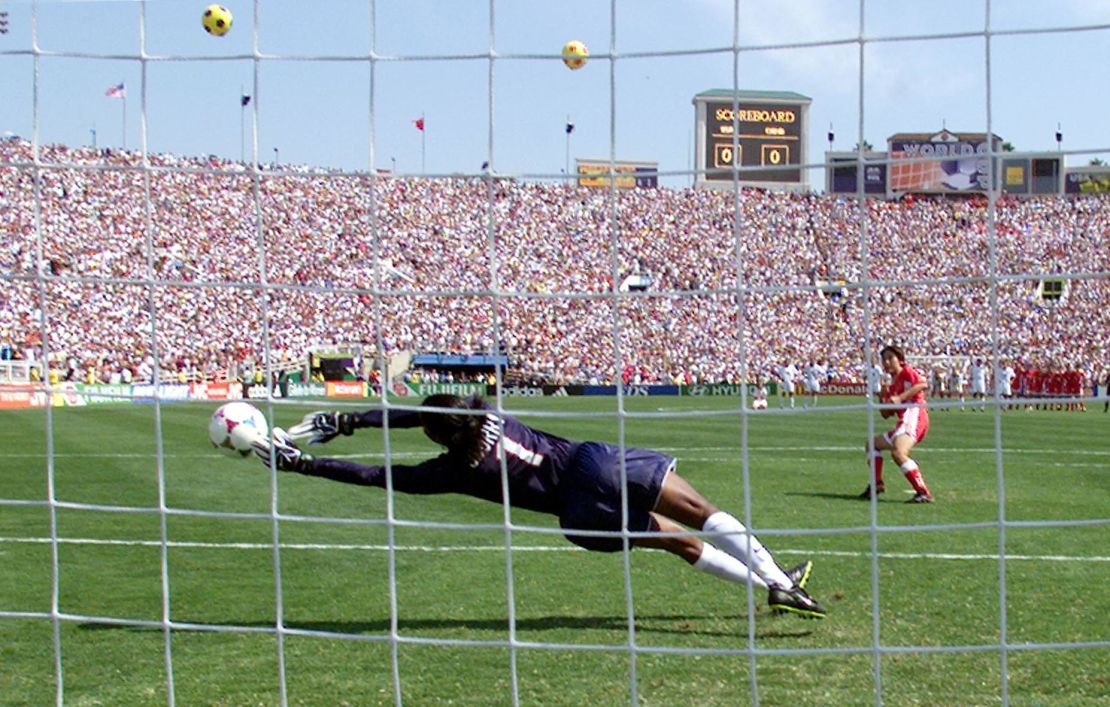
“I knew we were going to win after that [third] save. I didn’t know how or how dramatic it was going to be, but I knew we were going to win it and that would mean so many things for women’s soccer, for women in general and for the game all over the world and the United States.”
The U.S. would win the penalty shootout 5-4, sparking wild celebrations.
Among the fans in the stadium was President Bill Clinton, who congratulated the team in their locker room after the game and hosted them the following week at the White House.
“It’s going to have a bigger impact than people ever realize, and it will have a far-reaching impact not only in the United States but also in other countries,” said President Clinton at the time.
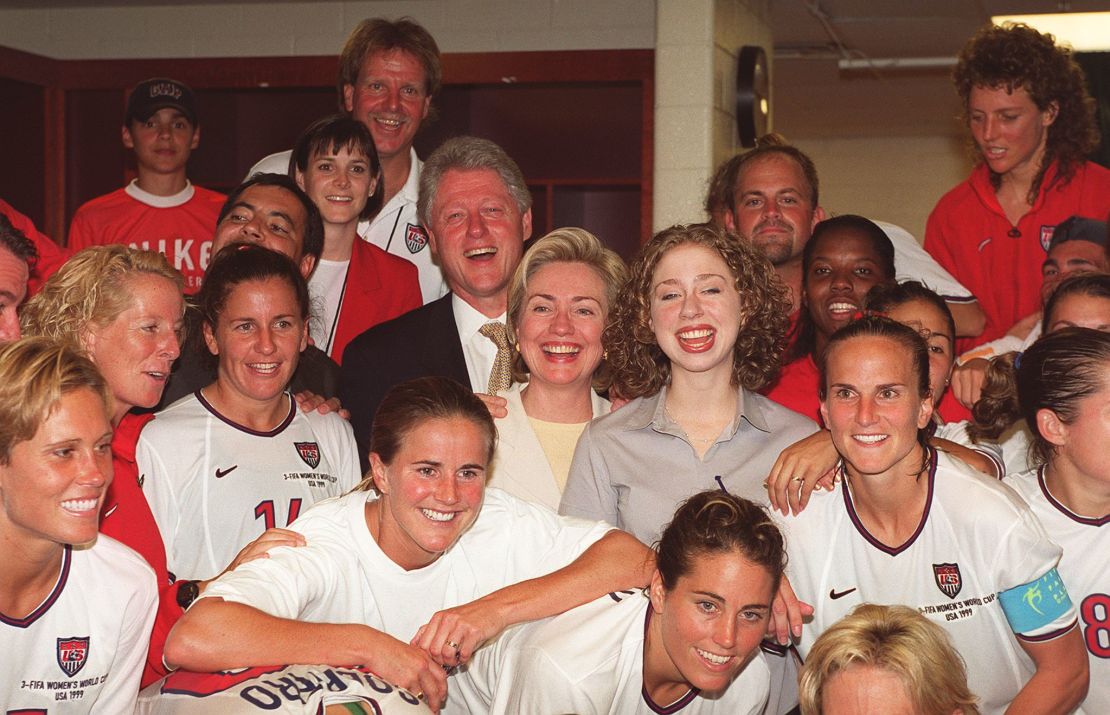
Co-captain Foudy admits: “I would be lying if I said it was never about winning. It was about winning. It mattered if we were on top of the podium of course. We were competitive athletes.
“But there was always this sense of the bigger picture. Could we start a movement to inspire young girls to play? Could we get the world watching women play soccer, and women’s sports in general, not just women’s soccer? So that bigger picture always loomed.”
Scurry says the greatest gift for her has been people coming up and telling her where they were during that final match. “To be able to change the trajectory of a complete stranger’s life for the better – I don’t think there’s any other gift you could actually ask for as a professional athlete,” Scurry says. “There’s nothing better than that.”
More than a team
What do pioneers do after conquering their sport? In truth, more than most.
“I’m a World Cup champion, Olympic gold medalist, former US Women’s National Team member, author, and mom?” Lilly laughs as she struggles to come up with a comprehensive title for herself. “Oh yeah and co-founder of Team First Soccer Academy.”
In 2010, Lilly, Venturini and Hamm started a youth soccer camp called Team First Soccer Academy. Even in retirement, each member of the team has continued to progress the women’s game.
With 354 international appearances, Lilly is still the most capped female player in history. During her 23 years in the first team, the former forward experienced at first-hand the various stages of development the national team went through.
She has written a book called “Powerhouse” which she hopes, she says, will show people “the greatness of my teammates and why we were so successful.”
“Life is never the same without that group. And what we did together was so amazing,” Lilly says. “It’s just different now. I miss them.”
As well as being one of the first African-American professional female soccer players, Scurry was also one of the first openly gay professional soccer players and has campaigned for gender equality. She has been a voice in the battle over wage-discrimination, and an advocate for brain injury awareness after experiencing career-ending concussion.
“Even though we’re not playing anymore, we want to do everything we can to advance the game,” Scurry says.
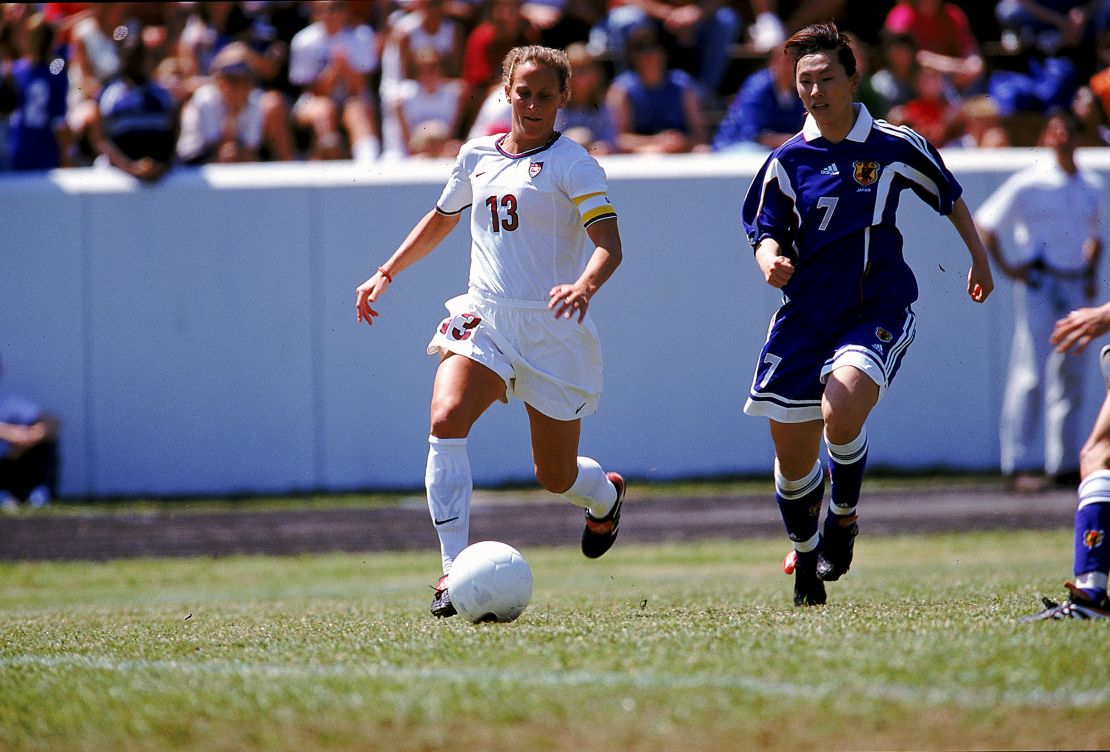
Akers, meanwhile, runs a horse rescue shelter in Georgia and conducts youth soccer camps where the kids can interact with the animals.
“It’s more about the life experience that you’re getting from being involved in soccer – and connecting the kids to the animals changes their lives,” Akers says. “What’s most important is for them to walk away and know that number one, they matter. Both of them matter.”
Last April, U.S. Soccer hosted its first reunion for the squad. All but two of the “99ers” attended and were celebrated during half-time of the women’s international match between the US and Belgium in Los Angeles.
A video honoring their epic win played on a large screen for the entire stadium to see. Overcome with excitement, the history-makers hugged Chastain when the winning penalty was shown.
“It was so amazing – we were laughing, making fun of each other, just like we hadn’t left,” Lilly recalls. “That to me shows how strong a team we were because it’s continued through that time even though we’ve been apart from each other.”
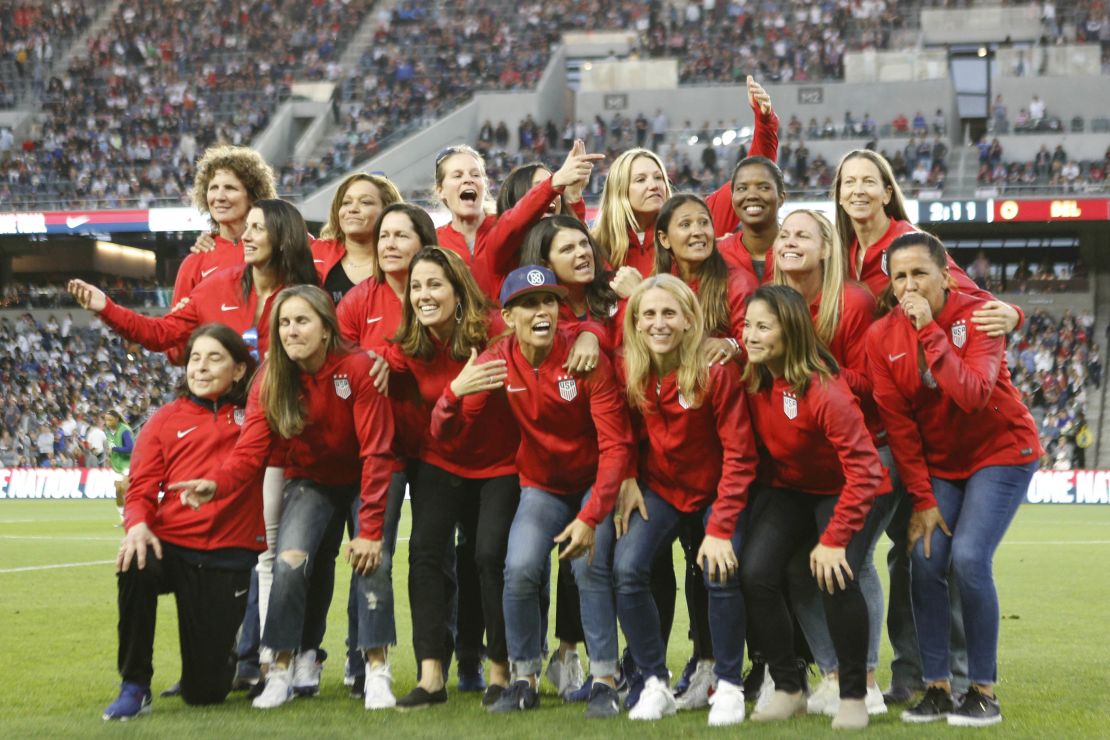
Continuing the fight for equality
Current members of the U.S. team have said they are grateful for the vision and leadership the “99ers” provided. Though the women’s game has grown over the past 20 years, the “99ers” all agree it has a way to go before the sport can be deemed truly equal.
“The women right now are very visible in the equal pay for equal play movement – we’ve always been visible,” Scurry says.
“It wasn’t called that back then, but we were the ones that started making a stand for equal pay. When the women’s national team is making similar to the men’s national team, then we’ll be where we should be.”
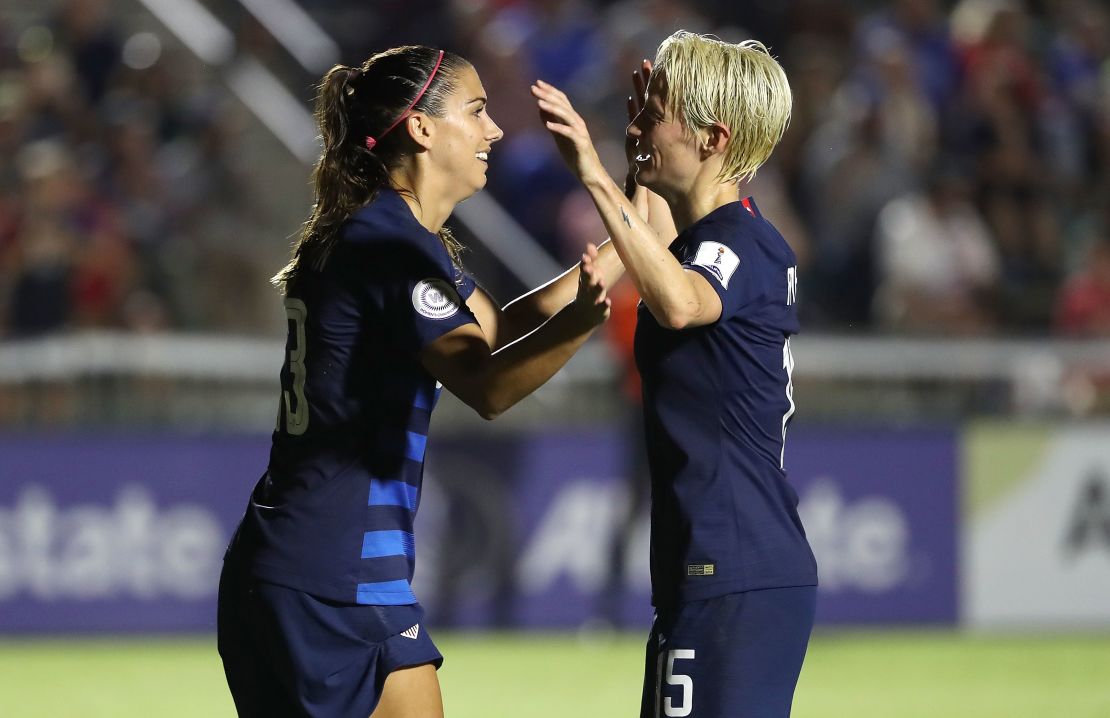
Twenty-eight members on the current U.S. Women’s Team filed a class-action lawsuit against the US Soccer Federation in March of this year, just months before the start of the tournament the U.S. hopes to successfully defend, alleging that the federation imposes gender discrimination by paying the women less than the members of the men’s national team.
Asked if the women’s team today had to deal with the same issues as 20 years ago, Foudy jokes that the travel conditions are a lot better these days at least.
“These women aren’t flying middle seats in the coach section all the way down the plane in their matching red sweatshirts. They aren’t sitting in front of the smoking section – because thankfully there are no more smoking sections,” Foudy says with a chuckle.
“But all these little things they’re still fighting for – it’s a different level of course than we had, but they’re still fighting for that equality. Marketing support, staffing support – there’s a lot of layers to it.”
Has the progress made been too slow? “I think it’s come a long way, but it’s also taken so long. It’s a progression,” says Lilly. “We were playing in the early ’90s, late ‘80s when we didn’t know we had the opportunity to be paid. Now there’s a realization that we should be getting paid and the present team is continuing that fight.”
Carrying the torch
Many of the current U.S. squad remember where they were when Chastain scored that penalty kick.
Carli Lloyd, the only current player whose career briefly overlapped with a few of the “99ers,” described playing with them as a dream come true.
“They’re players I looked up to and had posters of them on my wall and autographs. I watched them play in the ’99 World Cup, I watched them all growing up,” Lloyd says. “They paved the way. They carved out this path for us and now it’s our job to continue to make it better for those that are coming up.”
“This team is like our babies,” Foudy says of the current side which is ranked No. 1 in the world. “We want them to be successful. It wasn’t about our success, it was about the sport’s success and other girls being inspired by more awesome women.”
Samantha Mewis, one of the newer players on the team, credits the “99ers” for the opportunities she has today.
“It means so much to me to be on this team,” she says. “We owe the “99ers” and the other alumni so much. They paved the way for me to get to do this as my job.”
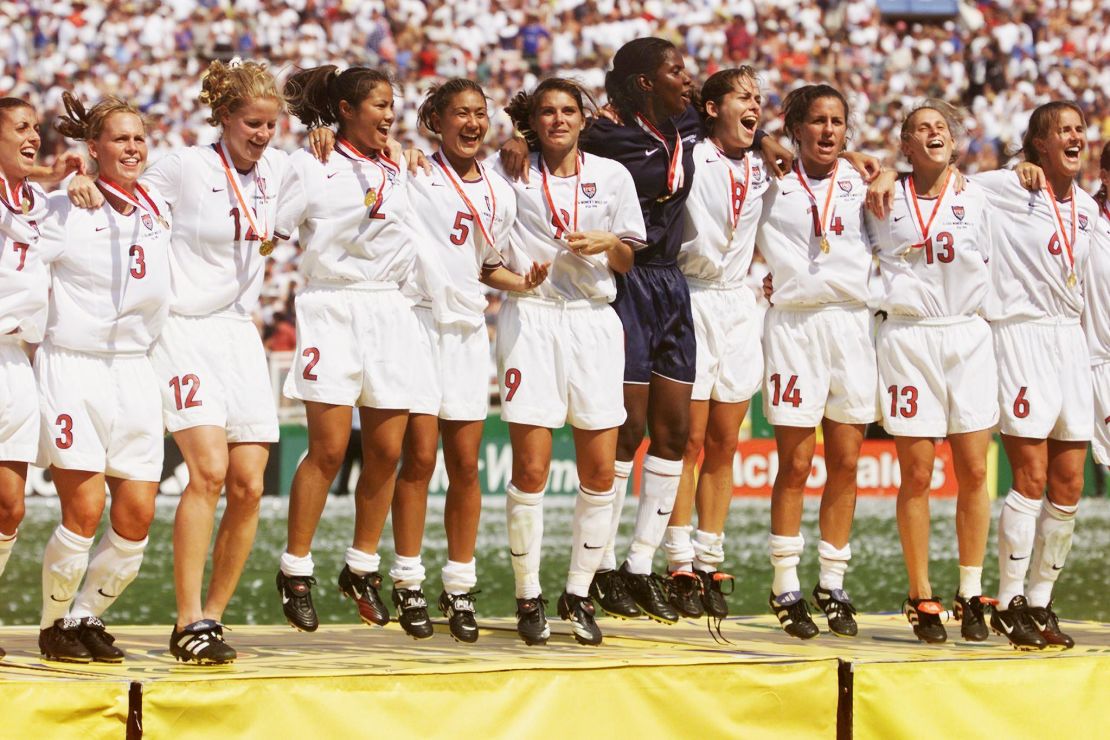
The U.S. will compete in its eighth World Cup this summer in France and is aiming to secure a record fourth title.
With players such as Carli Lloyd, Alex Morgan, Megan Rapinoe, Tobin Heath and others, the team has shown flashes of brilliance and has resembled the tenacity and conviction of the team of 20 years ago. The proverbial torch is in capable hands.



















